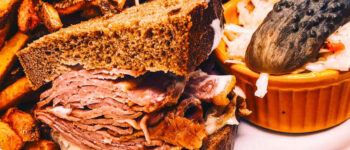Which Cleaning Agent Best Removes Baked on Food
Tackling stubborn, baked-on food can be a daunting kitchen task, and selecting an effective cleaner is key. This guide explores the best agents for cutting through that tough residue. Whether you’re dealing with a greasy oven or a scorched pan, we’ll help you find a solution that works. Discover practical tips to restore your kitchen surfaces to their original shine.
Top 5 Cleaning Agents That Best Remove Baked-On Food
- Baking soda: Baking soda is a natural abrasive that can help to scrub away baked-on food. To use baking soda, make a paste of baking soda and water and apply it to the baked-on food. Let it sit for a few minutes, then scrub with a sponge or brush.
- White vinegar: White vinegar is a strong acid that can help to dissolve baked-on food. To use white vinegar, spray it on the baked-on food and let it sit for a few minutes, then scrub with a sponge or brush.
- Try Dish Soap and Hot Water: Fill the dish with hot water and a squirt of dish soap, let it soak, then scrub. It works wonders on grease and food residue.
- Barkeeper’s Friend: Barkeeper’s Friend is a commercial cleaning agent that is specifically designed to remove baked-on food. It is a strong abrasive, so it should be used with caution. To use Barkeeper’s Friend, make a paste of Barkeeper’s Friend and water and apply it to the baked-on food. Let it sit for a few minutes, then scrub with a sponge or brush.
- Use a Magic Eraser: Great for surfaces where you need a gentle but effective touch.
Understanding Baked-on Food
The stubbornness of baked-on food is due to the caramelization and charring of sugars and proteins at high temperatures. This chemical reaction not only imparts flavor but also creates a strong bond between the food and the cooking surface. The most commonly affected surfaces include:
- Oven interiors
- Baking trays
- Cookware such as pots and pans
These surfaces present unique challenges, as their material can determine the cleaning method. For instance, cast iron requires different care than stainless steel. Therefore, identifying the right cleaning agent and technique is essential to avoid damaging your cookware.
Types of Cleaning Agents
When tackling baked-on food, various cleaning agents can be employed. These range from chemical to natural solutions, and their effectiveness varies.
- Chemical Cleaners: These are often the go-to for tough jobs.
- Alkaline Cleaners: Effective for greasy residue but may require caution on delicate surfaces.
- Acidic Cleaners: Good for mineral deposits but not always suitable for baked-on food.
- Degreasers: Specifically designed to break down fats, these can be potent against baked-on grease.
- Natural Cleaners: A safer, environmentally friendly choice.
- Vinegar: An acid that can dissolve deposits and soften food remnants.
- Baking Soda: A mild abrasive that also reacts chemically to break down food.
- Lemon: Similar to vinegar, its citric acid can help in cleaning.
- Abrasive Cleaners: Physical action can remove what chemicals alone cannot.
- Scouring Powders: Effective for many surfaces but can scratch if used improperly.
- Steel Wool: A strong abrasive, best for metal surfaces that can withstand harsh treatment.
- Pumice Stones: Natural abrasives often used for tougher jobs on resilient surfaces.
The choice of cleaning agent largely depends on the surface material and the extent of the baked-on food. While chemical cleaners are powerful, natural cleaners offer a safer alternative and are often sufficient for less severe cases. Abrasives can be effective but require careful use to avoid surface damage. In summary, no single cleaner is best for all situations, but understanding their properties allows for a targeted approach in tackling baked-on food.
Comparison of Cleaning Agents
See more : How Many Ounces in a Gallon
The effectiveness of cleaning agents can vary greatly. To help you decide, here’s a simple list summarizing their strengths:
- Alkaline cleaners are most effective for protein-based foods
- Acidic cleaners excel at removing calcified residues
- Degreasers are the go-to for fatty, oily messes
In terms of surface suitability, natural cleaners typically win, as they are gentle on most surfaces. Chemical cleaners, while potent, may not be ideal for delicate materials. Abrasives should be used with care to prevent damage.
The environmental impact and safety should not be overlooked. Chemical cleaners often contain toxins and pollutants, while natural options are typically more eco-friendly and safer for household use. That said, some natural substances like vinegar can still irritate if not handled properly.
Remember, the effectiveness of a cleaner also depends on the application. Letting a cleaner sit for a few minutes can significantly increase its power. But always check the manufacturer’s instructions to avoid any mishaps.
Best Practices for Removing Baked-on Food
The most effective method to tackle baked-on food is pre-treatment. Soak the affected area with hot water and a suitable cleaning agent to soften the residue. This initial step is crucial as it loosens the particles, making them easier to remove. Here’s a step-by-step guide:
- Select the cleaning agent that matches your surface type.
- Apply it to the baked-on food and let it sit for a specified time.
- Gently scrub the surface with a non-abrasive tool to avoid scratches.
- Rinse thoroughly with water and dry with a clean cloth.
See more : Dishwashing temperature guidelines
Proper application of cleaning agents can greatly enhance their effectiveness. For chemical cleaners, always use gloves and ensure good ventilation. Natural cleaners are more forgiving, but still require careful use to protect sensitive surfaces.
Additional Tips and Tricks
Beyond the standard cleaning methods, there are DIY recipes and preventive steps that can help you maintain a spotless kitchen. For example, a paste made from baking soda and water can be a gentle yet effective cleaner for many surfaces. Here are a few more tips:
- Combine equal parts of vinegar and water for a natural degreaser.
- Use lemon halves sprinkled with salt to scrub away grime.
- Prevent future build-up by applying a thin layer of cooking spray to pans before use.
Regular maintenance, such as wiping down surfaces after each use, can also prevent the need for intense cleaning sessions.
Conclusion
To sum up, the best cleaning agent for baked-on food depends on the surface and the severity of the situation. Pre-treatment and correct application are key to success, and natural alternatives can be just as effective as chemical ones, with the added benefit of being eco-friendly. Remember, prevention is better than cure, so regular maintenance is essential. By choosing the right cleaning strategy and maintaining consistent care, your kitchen surfaces can remain clean and inviting with minimal effort.
Laundry Services in Fort Lauderdale : 954-491-8686
View Location on Google Map
Nigel Gildon editor:Nigel Gildon is the editor of Chef Wayne’s Big Mamou: Chef Wayne’s Big Mamou. He has worked in the publishing industry for many years and has a passion for helping new authors get their work into the hands of readers. 63 Liberty Street * Springfield, MA 01003




